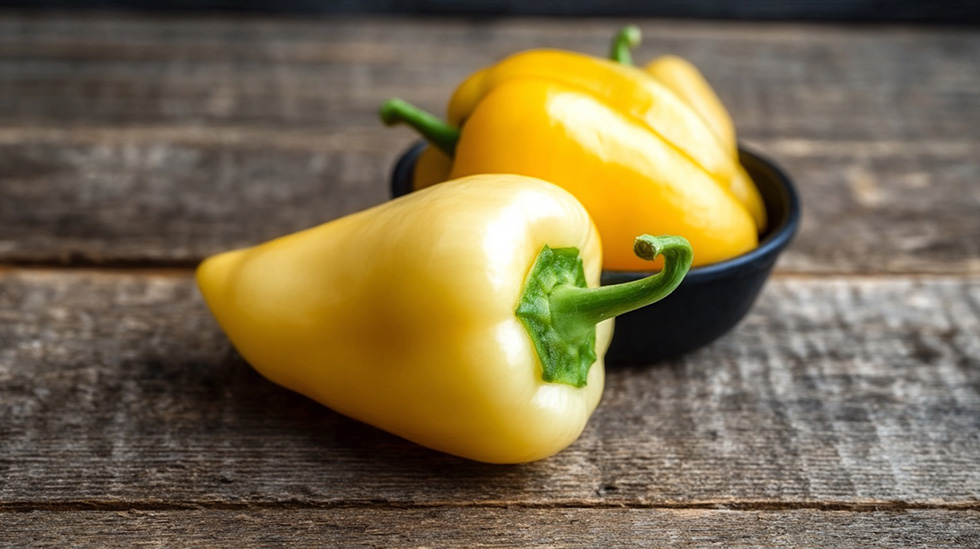Stuffing peppers – the star of stuffed delights 🌶️
The “Hungarian sweet pepper”, or “stuffing pepper”, is one of the most commonly used and most popular vegetables in home kitchens. Its Latin name is *Capsicum annuum*, and it belongs to the pepper family, like its hotter relatives. Stuffing peppers are distinguished by their mild flavour, thick, fleshy-walled fruit and distinctive conical shape, most often used to make the famous stuffed peppers.

It originated in Central and South America, but came to Europe – including Hungary – in the 16th century and has remained a close friend ever since. It has become a staple of Hungarian cuisine, and it’s no coincidence that our grandmothers used to put it on the spareribs alongside minced meat.
How important is it in the kitchen?
Rating: 5/5
Stuffing pepper is a must in Hungarian cuisine. It is a must-have in Hungarian cuisine. In Europe, it is mainly popular in Central and Eastern Europe, but it is also often found in Mediterranean countries. Its versatility and pleasant flavour make it a must in any kitchen.
Edible parts of the plant
In the case of stuffing peppers, the main attraction is the fruit – that’s the part we eat. Ripe, yellowish-white, slightly greenish in colour, thick fleshed, hollow berries. The seeds are edible, but most people remove them before cooking because they can give a slightly bitter taste. The stem and the calyx are not usually eaten, as these parts are hard, fibrous and not suitable for eating.
Health benefits
Stuffing peppers are a vitamin bomb! It is high in vitamin C, and contains more per gram than oranges 🍊. It is also rich in vitamin A, vitamin B6, folic acid and antioxidants. According to traditional medicine, it strengthens the immune system, improves digestion and helps skin health. Because it is low in calories, it is also a great choice for dieters!
Production and season
Stuffing peppers are also grown in large quantities in Hungary, mainly in the open field, but also in foil. The domestic season usually lasts from June to the end of September. They are also available from imports, mainly from Spain and the Netherlands, and are available in the cooler months.
Throughout Europe, the Mediterranean countries – especially Spain and Italy – produce the most of it, but it is also a very popular vegetable in the Central European region, including Hungary.
How to choose really good stuffing peppers
It’s not a fool’s errand to recognise good quality pieces, but there are a few things to look out for:
- The skin should be firm, smooth and shiny
- Avoid specimens that are soft, depressed or have brown spots
- The weight of the pepper is a tell-tale sign: the heavier it is in relation to its size, the meatier it is
- The smell can also be telling – fresh peppers have a slightly green, slightly sweet smell
Storage – don’t let it get lost!
Stuffing peppers will stay fresh for 4-5 days if stored in a vegetable crate in the fridge. Do not wash in advance, only immediately before use! If you want to store them longer, you can freeze them sliced or stuffed. It keeps its texture and flavour even when frozen – a great way to prepare it for winter!
In the kitchens of the world
Although stuffing paprika is typically known as a Hungarian invention, similar varieties of paprika are also found in the Balkans and the Mediterranean. Greeks stuff them with rice and vegetables as “gemista”, Italians know them as “peperoni ripieni”, while in Turkish cuisine they are prepared with minced meat and tomato sauce.
Iconic recipe – Stuffed peppers
When we talk about stuffing peppers, we can’t avoid the classic stuffed pepper with tomato sauce! Stuffed with a mixture of minced pork, rice and spices (salt, pepper, red pepper), the peppers are cooked until tender in a lightly sweetened tomato sauce. A true summer classic, treasured in most families’ recipe books.
Kitchen tips and tricks
Stuffing peppers are not just for stuffing! Diced and used in soups, salads, grilled in the oven or as a base for a pepper cream.
- Spices that suit it: marjoram, basil, garlic, parsley, pepper
- Spices to avoid: overly dominant spices, such as curry or cinnamon, can overpower the delicate flavour of the pepper
It is also worth trying with different fillings: vegetarian versions, quinoa or bulgur-based fillings, and even fish versions are delicious!
Summary
Stuffing paprika is not only a mainstay of Hungarian cuisine, but also a vegetable with memories, flavours and traditions. Practical, versatile, healthy and delicious – just the kind of thing to love. The next time you go to the market, don’t leave the paprika behind: fill your plate with experiences! 😉
